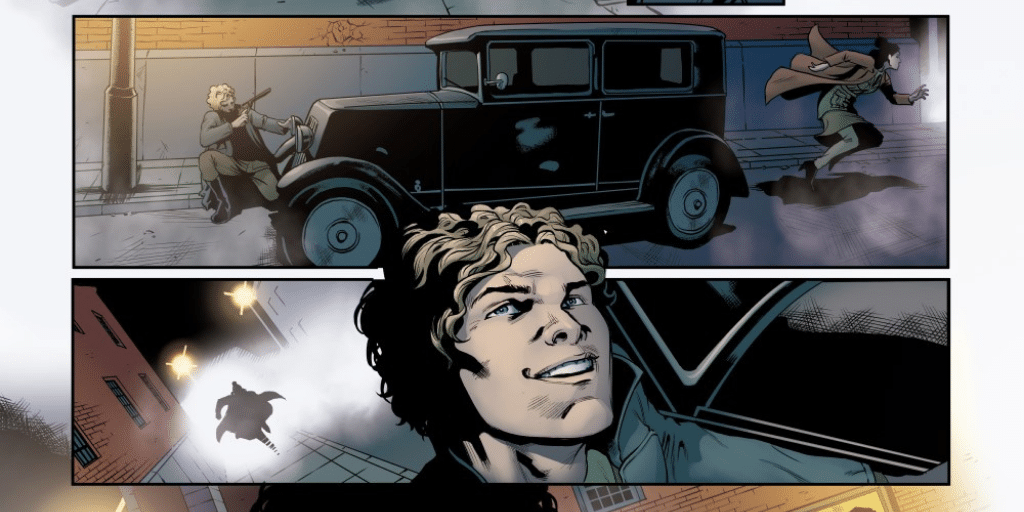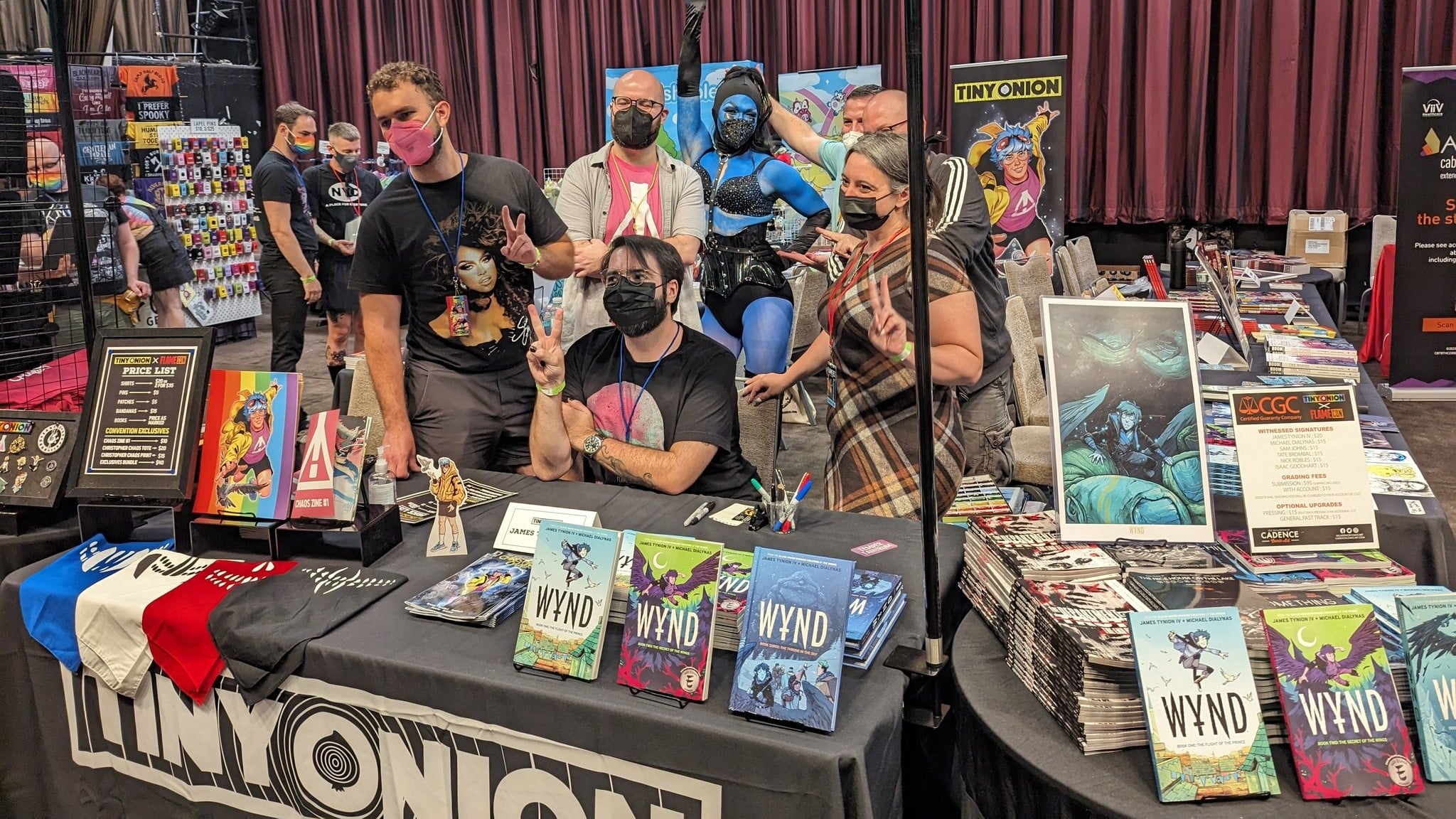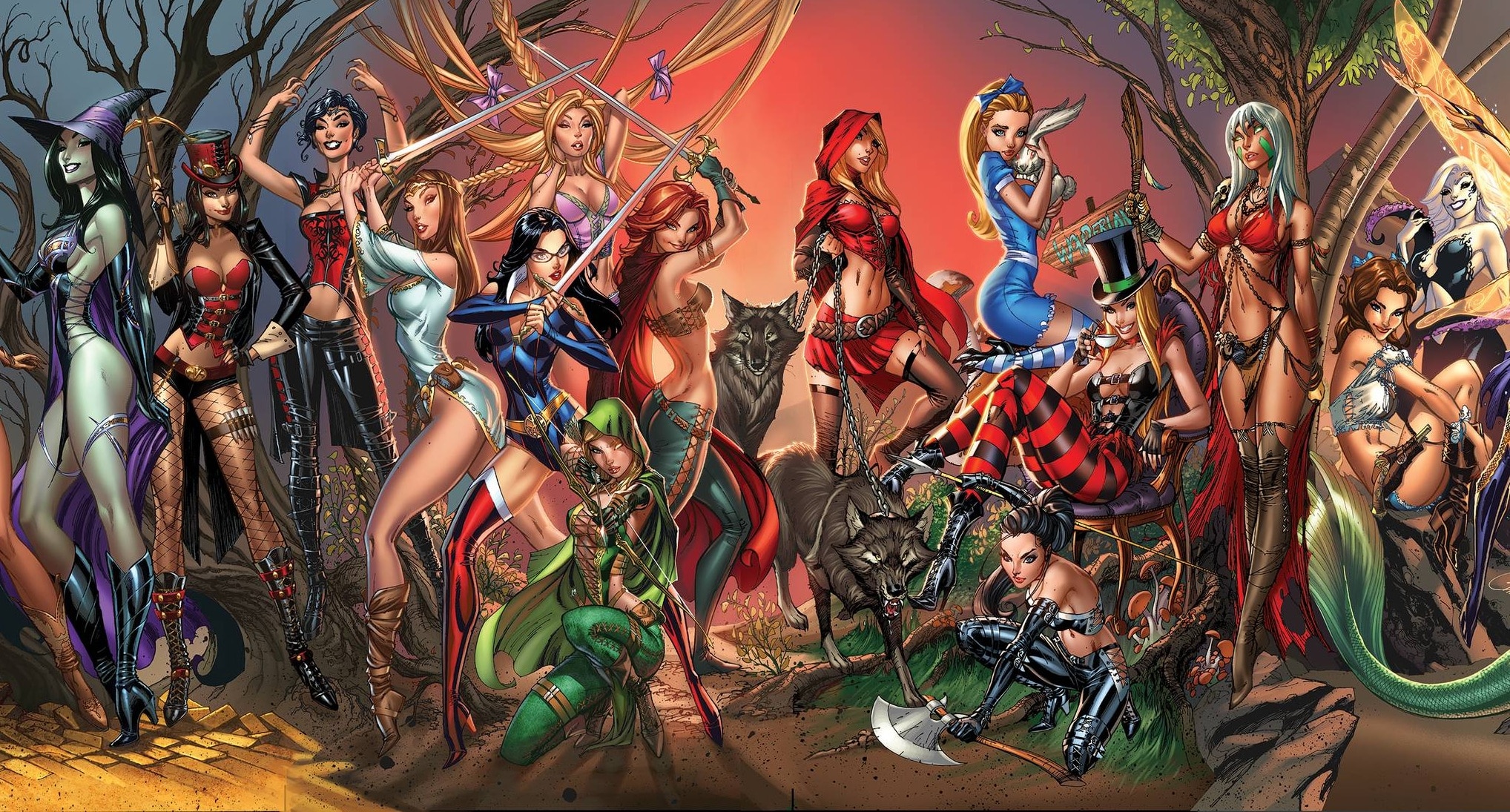My first exposure to Sherlock Holmes in print was going into this little shop and finding a selection of small paperbacks that were Classics Illustrated-esque comics from Pendulum Press. I walked out with a bunch, because they were a dollar each and my mom was more than willing to buy them for me since they would be educational. Among them was The Great Adventures of Sherlock Holmes, an adaptation of two of Sir Arthur Conan Doyle’s short stories, “The Adventure of the Speckled Band” and “The Boscombe Valley Mystery.” I read that one first out of the stack of cheap little 80-page paperbacks, and I was done.
Since then, I’ve read Conan Doyle’s entire canon of Holmes stories multiple times and more pastiches than I can count, not to mention watched all manner of film and television adaptations, from the serious (Jeremy Brett’s performance in the adaptations brought over from the U.K. and played on PBS as part of Mystery remains my gold standard for Holmes) to the humorous (Sir Michael Caine plays a gloriously buffoonish Holmes in Without a Clue).
Above all, I still have a soft spot for Holmes comics. I’ve seen him meet Batman, fight Eclipso and I have this whole X-Men/Sherlock Holmes pitch that I’ve talked about on WMQ&A a couple of times. So a Kickstarter about Holmes’ heretofore unknown nephew working for MI-6 with a new Watson on the verge of World War I sounded fascinating. And so I backed the first two issues of Jeff Rider’s Major Holmes & Captain Watson and enjoyed them thoroughly. With the campaign for issues #3 and #4 launching today, I sat down with Rider to talk about his process and the world’s most legendary detective.

Matt Lazorwitz: What is the elevator pitch for Major Holmes & Captain Watson?
Jeff Rider: Major Holmes & Captain Watson is the story of Sheffield Holmes, nephew of the Great Detective, and the mysterious American Imogen Watson, who solve a grisly murder in London’s East End in 1914 and uncover a dark cabal that threatens to destroy the Holmes family and plunge the world into global war. It’s set in the original Doyle canon and combines the best elements of detective stories with historical fiction and espionage thrillers. It’s for fans of Sherlock Holmes and James Bond rolled up into a compelling war drama on the scale of 1917.
ML: How did you put your creative team together for this book?
JR: It was an interesting road, to be sure. The first artist I ever pitched passed, but they introduced me to an artist named Carlos Cabaleiro, who worked with me on the original webcomic and did the character designs. When I decided to take the book to a full print ongoing series, I looked to find a new creative team. I met Ismael Canales’ agent via a connection at New York Comic Con. Ismael really took Carlos’ early designs and gave them a life of their own, and I love his artwork. Ismael brought in Roger Sorruca on colors, as they’ve worked together before on Athena Voltaire (Action Lab) and have a great relationship. Roger has taught me a thing or two about color, helping me with a lot of the layout design as well. And Justin Birch is just one of the best letterers in the business, and we’ve worked on loads of stuff before. Trust me, when you write stories set in the Holmes canon, you get a WORDY book, and it takes a great letterer to make it sing.

ML: You’re stretching the characters beyond the usual Holmes/Watson characterization and dynamic, with a gay Holmes and a female Watson, plus making them more equals than the originals are. Why is it important to make these changes?
JR: My initial idea, long ago, was that a NEW Holmes and Watson would be equals, real partners. It’s one of the dynamics of the canon I really felt was missing. I didn’t want the “smart” character to be a “freak,” as a lot of modern Holmes imaginings do. I didn’t want to foster an anti-intellectual approach to Holmes, the idea that a genius must also be broken. I also wanted, wholeheartedly, for Sheffield to be DIFFERENT from Sherlock, really his own man. From there, I looked at how to get greater representation into a period piece, and the idea that Sheffield Holmes was a gay man in a time when that was very dangerous to be gay gave the story a really great edge. Unlike most versions of the original Great Detective, Sheffield Holmes is capable of deep romantic love, but the people he loves, and that part of his identity, are unjustly a danger to him in this time and place. He’s not only a detective and a spy, Sheffield has this dangerous element built into WHO he is, and the unfairness of that leads to a lot of anger in him. He resents not being able to BE himself in so many ways: He can’t be out, and he feels like he lives in his famous uncle’s shadow. But the partnership between Sheffield and Imogen gives them each a real kindred spirit, and a true partner. Imogen is intellectually Sheffield’s equal in a world that, on the exterior, views her as less because of her gender. She knows different, of course, and has little regard for what others think, which in its own way deeply changes her from the previous Watson. I love Imogen so much, she pulls NO punches and is frankly more of a true action hero than Sheffield. Her intellect is sharp and well trained, like Sheffield’s, but with a no-nonsense insight that cuts to the bone sometimes. How she became the new “Watson” is a fun secret for Holmes canon fans, too. That theme of “dangerous identity,” that something in each of their backstories is as much a threat as the enemies they face, is a theme that carries over to most of the main characters in the book as well. But that’d be getting into spoilers!

ML: Why did you choose to set your story in 1914, just before the beginning of World War I? Obviously it gives a great story hook.
JR: The time setting IS connected to the clues of the mystery in this first arc, so there are some things I can’t say about the dates. But while clues in the dates are important, so is the political climate of Europe in the spring and summer of 1914. Major Holmes & Captain Watson is both a detective and an espionage story, so the politics here really matter. The time setting also lets us highlight the dangers in each character’s identity. Holmes can’t be out as a gay man without risking prison, other characters have their own secrets and scandals that are more dangerous in 1914 than they would be today.
Plus, we did the math on Sherlock and Mycroft’s ages, and their adult nephew would have been at the right age to have served in WWI. (Trust me, we built a full Holmes family tree going back generations, and some of those characters have found their way into the comics and the prose short stories.)
ML: What is your favorite of the canon Holmes stories? And can you pick a favorite Holmes pastiche (aside from your own)?
JR: I love Hound of the Baskervilles for its creepier vibe, and my two favorite short Doyle stories are “The Adventure of the Speckled Band” and of course “His Last Bow,” which obviously heavily affects our story. As far as other pastiches of Holmes, while I enjoy many of them (the friendship between Holmes and Watson in the BBC series is well done, despite its unevenness), I often find myself fuming at the modern concept of a Sherlock Holmes who’s a disturbed genius, a man whose intelligence has in some fundamental way broken him. My grandmother, who was a librarian, gave me my copy of The Complete Sherlock Holmes when I was 7 or 8 years old, along with a ton of other adventure fiction like The Three Musketeers and Robinson Crusoe. When I read the canon for the first time as a kid, I was enamored with this man making his way in the world with a unique mind, a man who was celebrated all over the world for that intellect. Sherlock Holmes is a flawed man, to be sure, as are we all. But depictions of him as an unstable, broken and, worse, mean person, simply because he is intelligent? To me that feels very incongruous to what Doyle intended. I also think it’s just not helpful to think that way about smart people, or about people who think differently than we do. Holmes’ uniqueness, and hopefully that of his family in our own story, is another way to remind ourselves that those that are different than we are aren’t inherently less valuable, but people we can learn from and admire.

ML: This campaign will complete the story you have been telling, correct? Is this the end of the series, or is this the first arc of something you want to tell more stories with?
JR: Yes, Issues #3-4, which are featured in this campaign, are the ending of the first story arc, but it is by no means the end for Sheffield, Imogen and the 6th S.I.S. Really, this arc is about establishing our characters and their world, putting together a new Holmes & Watson as well as a team that will work to protect Britain and the world in the coming global war. Each successive arc will see Sheffield and Imogen going up against other members of the dark cabal that they’ve uncovered in this first arc, and how that group moves behind the scenes of some of the biggest events of WWI and human history in general. These future “cases” of Holmes and Watson will really explore an important time in the foundation of the world we live in now, well beyond the European battlefields of WWI. We’ve got some exciting things planned.
ML: This is your second campaign for Major Holmes & Captain Watson. What did you learn from the first that you’re taking into this one, and might be helpful for other creators looking to use Kickstarter?
JR: One thing we did with our first campaign, a new approach for me after other previous successful Kickstarter campaigns, is the idea of bundling issues together. If we tried to do a campaign for each issue individually, it would take MUCH too long to get the full story into the hands of our readers.
I think we also really placed a priority on making the books (or the majority of them) BEFORE we went to Kickstarter, rather than after. That way backers aren’t waiting 6-8 months for books and rewards to be created and then shipped. We had issue #1-2 completed before we ever launched, and issue #3 is complete now two weeks ahead of the next campaign. Issue #4, which is nearly double-sized at 34 pages of story (plus back matter), is in the coloring stage, so it won’t be far behind.
You can check out the campaign for Major Holmes & Captain Watson HERE on Kickstarter.
Matt Lazorwitz read his first comic at the age of 5. It was Who's Who in the DC Universe #2, featuring characters whose names begin with B, which explains so much about his Batman obsession. He writes about comics he loves, and co-hosts the podcasts BatChat with Matt & Will and The ComicsXF Interview Podcast.






